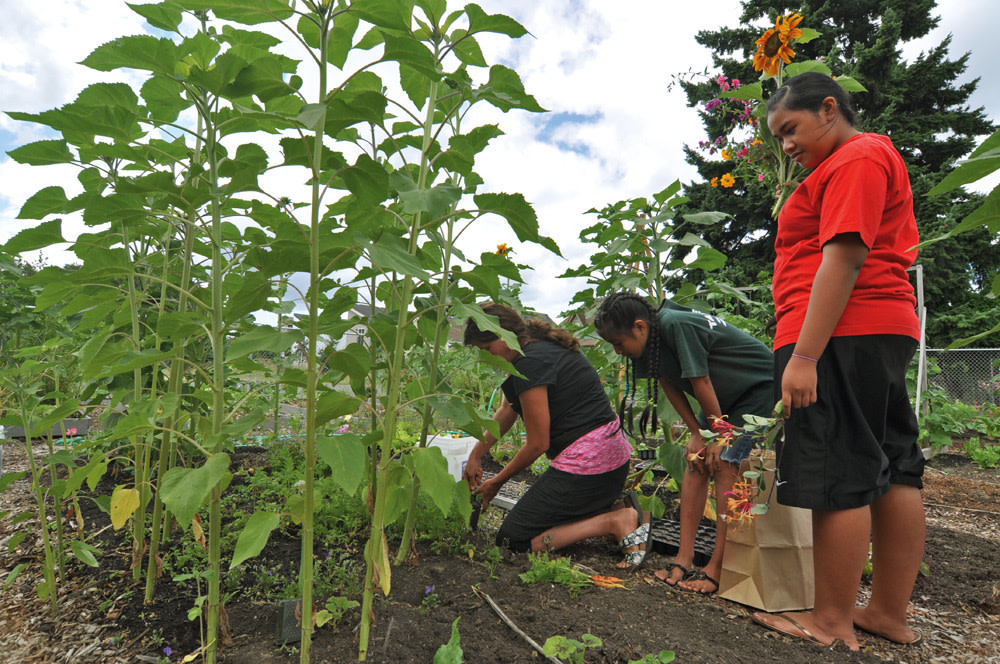International Harvesters

Image: Mei Ratz
VESTAL ELEMENTARY, a red-brick hulk along NE 82nd Avenue, probably doesn’t figure on too many trendspotters’ tours of Portland. Too bad. The verdant 13,000-square-foot garden behind the school might be the finest locally cultivated hybrid of two major societal shifts: our ever-more-dogged interest in where our food comes from, and the rapid demographic changes remixing Portland’s once-monochromatic culture.
Speakers of 21 languages attend Vestal, and its neighborhood is one of the city’s most diverse. Starting in 2009, students and teachers transformed asphalt into a garden that reflects that international flavor.
This harvest season, besides sunflowers, carrots, and melons, the Vestalites will pick tomatillos, cilantro, chiles, and white onions from a dedicated salsa garden. The school’s Asian populations have planted Korean squash—similar to Mexican yellow squash and used in soups, stir-fries, or salads—along with Vietnamese coriander and edamame. Even fava beans elicited a cosmopolitan response. “We originally planted favas to shade lower-lying plants; then a Vietnamese mother explained how she would cook them,” says Gretchen Rowland, a Vestal teacher and parent who helps coordinate the garden. The school plot also includes the ingredients to make a spice blend called berbere, popular throughout East Africa.
The garden effort involved teachers, students, and residents of the surrounding Montavilla neighborhood, itself a culinary crossroads where a small clutch of fashionable restaurants abuts 82nd’s strip of Asian and Mexican eateries. Rowland helped write the grant proposals that fund the project. (East Multnomah Soil and Water and Whole Foods are among the benefactors.)
Currently the Vestal kids’ crops provide enough fresh vegetables for a weekly cafeteria salad bar, joining other Portland public schools such as Abernethy in supplying food from on-site student gardens.
Perhaps the more important produce is metaphorical. “In the garden,” Rowland says, “there’s no one dominant culture.”
Hobak
(aka Korean squash stir-fry)
1 Slice a Korean squash into half moons.
2 Mix with 1 tbsp saeujeot—jarred salted shrimp,
found at specialty markets—and let stand 15 mins.
3 Fry 1 tbsp minced garlic for 5 mins.
4 Add squash and fry for 5 mins.
5 Add 4 tbsp water, cook until squash becomes translucent.
6 Garnish with sesame oil and seeds.



